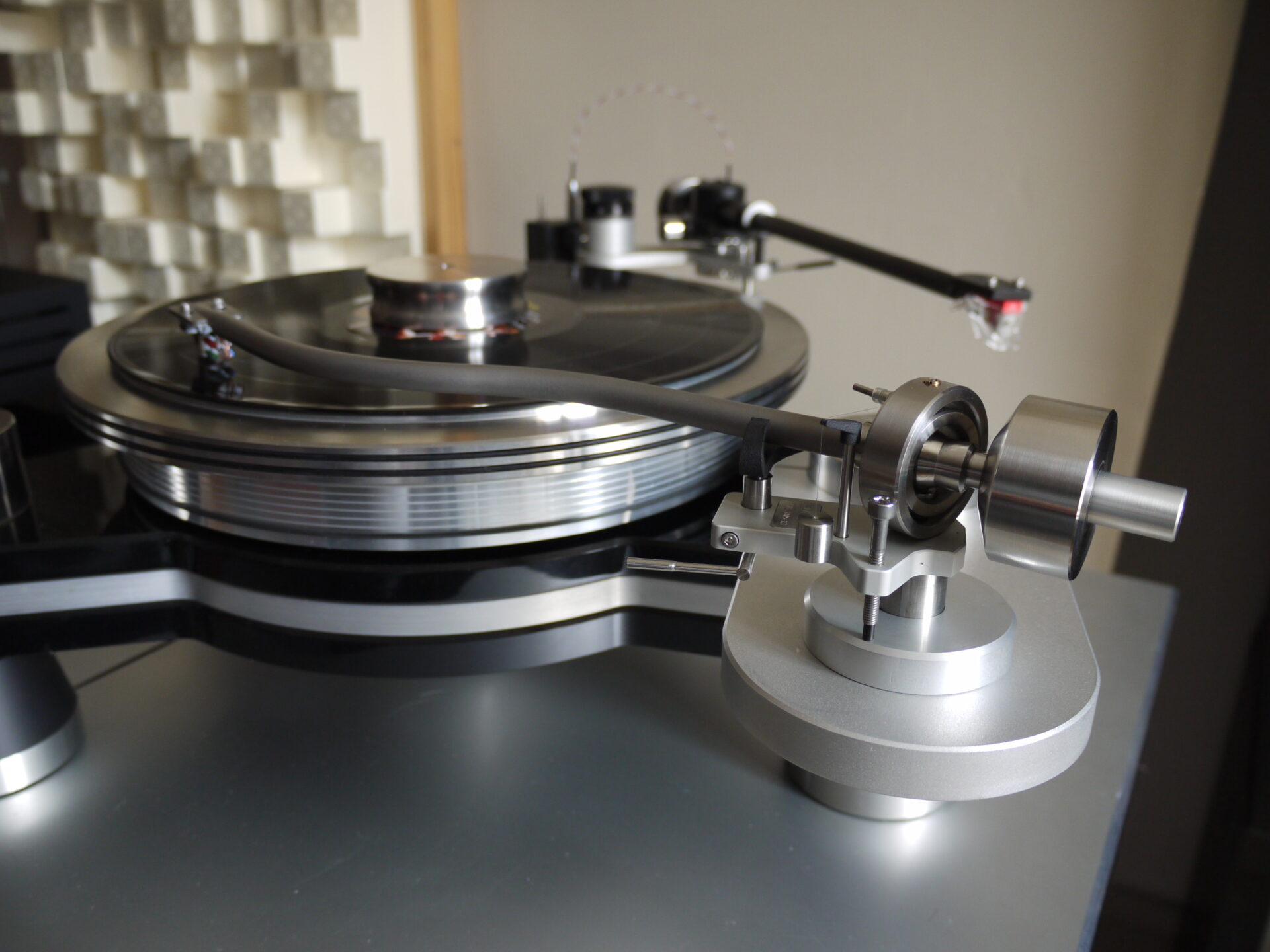 The space, transparency, rich tonality and natural scale, dimensionality and perspective that the 12” arm lends to the musical event in turn lend themselves perfectly to acoustic recordings – whether that means classical and orchestral or smaller scale folk, jazz or pop. Direct comparison between the 12” arm and the 9” makes the latter sound clipped and driven – not unattractive but a little overstated and ‘loud’. Of course, one man’s overstated and loud is another’s vivid and exciting and that’s the real beauty of the Alphason family. The 9” leans the music one way, the 12” leans the other while the 10.5” sits firmly in the middle, sacrificing a little of the longer arm’s spatial and harmonic development for a quicker and slightly more insistent performance.
The space, transparency, rich tonality and natural scale, dimensionality and perspective that the 12” arm lends to the musical event in turn lend themselves perfectly to acoustic recordings – whether that means classical and orchestral or smaller scale folk, jazz or pop. Direct comparison between the 12” arm and the 9” makes the latter sound clipped and driven – not unattractive but a little overstated and ‘loud’. Of course, one man’s overstated and loud is another’s vivid and exciting and that’s the real beauty of the Alphason family. The 9” leans the music one way, the 12” leans the other while the 10.5” sits firmly in the middle, sacrificing a little of the longer arm’s spatial and harmonic development for a quicker and slightly more insistent performance.
Moving from the 9” to the 10.5” on the Yepes disc opens the soundstage and introduces a less insistent quality and a greater sense of subtlety and articulation in the soloist’s playing. That’s partly down to the increased length on the guitar’s notes, with a more complex, rounded tone, more body and a longer tail. But it’s also down to a more sophisticated and less obvious sense of rhythm and purpose. Yepes’ careful shaping of his phrases and the work he puts into the strings is more apparent but also a more natural part of the performance. The mechanical aspects of his playing are no less important but become more human. It’s a balance of virtues – the trade-off between drive/presence and harmonic texture and temporal expression – that makes the 10.5 a consummate all-rounder, just as comfortable with the attitude, angst and percussive cannonade of Elvis Costello’s This Year’s Model (Radar Records RAD 3) or the organised chaos of Gregorio Paniagua and Atrium Musicae De Madrid’s La Folia (Harmonia Mundi France, HM 1050), the beautiful, gently pulsing simplicity of Mozart’s Serenade K361 (Böhm/BPWE, DGG 2530 136) or the rhythmic nuances of Art Pepper’s Smack Up (Contemporary S 7602). The extraordinary tonal purity, clarity and articulation deliver a performance that challenges tonearms at far higher prices – and exceeds many of them, especially when it comes to natural musical expression.
As someone whose critical listening involves almost exclusively acoustic or part acoustic recordings and who has the turntable(s) to accommodate it, the musical qualities of the 12” arm are hard to ignore. But if I listened to more rock and pop, more current music, a more far reaching and varied musical diet (or if my system was narrower in bandwidth or more limited in transparency) the 9” or 10.5” arms would start to come into their own.
Time for a little honest self-assessment…
Which brings us to the nub of the question: just what sort of listener are you?
As wonderfully musical and attractive as they are, the standard Alphason arms are not for everybody: whether to choose an HR-200S and if so, which one to choose depends on a range of factors – and not just what sort of music you listen to. By contemporary standards, they offer limited adjustability, with a limited ability to adjust VTA on the fly and eschewing azimuth adjustment altogether. If you are the sort of listener who obsesses over every last aspect of cartridge alignment; the sort of listener who adjusts VTA on a record-by-record basis and whose record collection embraces not just 180g or 200g pressings, but 150g and 120g pressings too (yes, guilty as charged), then the HR-200S-AZ with the optional VTA Optimiser is the way to go – at a price. If however you are a set-once-and-leave-well-alone type of listener, then the standard Alphason’s make a strong case for consideration. Beautifully built, with a minimalist elegance that is rare in this audio day and age, they are fully engineered solution, from PinJack cartridge connections to the excellence of the tonearm leads. In between, you’ve got those zero-play ceramic bearings, the braced, one-piece titanium arm-wand, the infinitely adjustable bias and a choice of different counterweights to help optimise cartridge performance. And that’s before you consider the virtues of the different effective lengths: the drive, substance and infectious enthusiasm of the 9”; the subtle poise, delicate textures, dimensionality, space and grace of the 12” or the near perfect balance between those two achieved by the 10.5”. But what is even more impressive is that the HR-200S arms do all this at what is an astonishingly approachable price. The 9” starts at £3,789.00, the 10.5” costs £3,989.00 and the 12” weighs in at £4,089.00, prices that include 20% UK sales tax. That makes even the 12” Alphason cheaper than the last published price of the SME IV – and sonically that’s a slam dunk! In fact, I’d take any of the Alphason’s over any of the Linn or SME arms – and that’s before you consider that the titanium tubed/bonded headshell Ekos SE costs around £5,650!!

